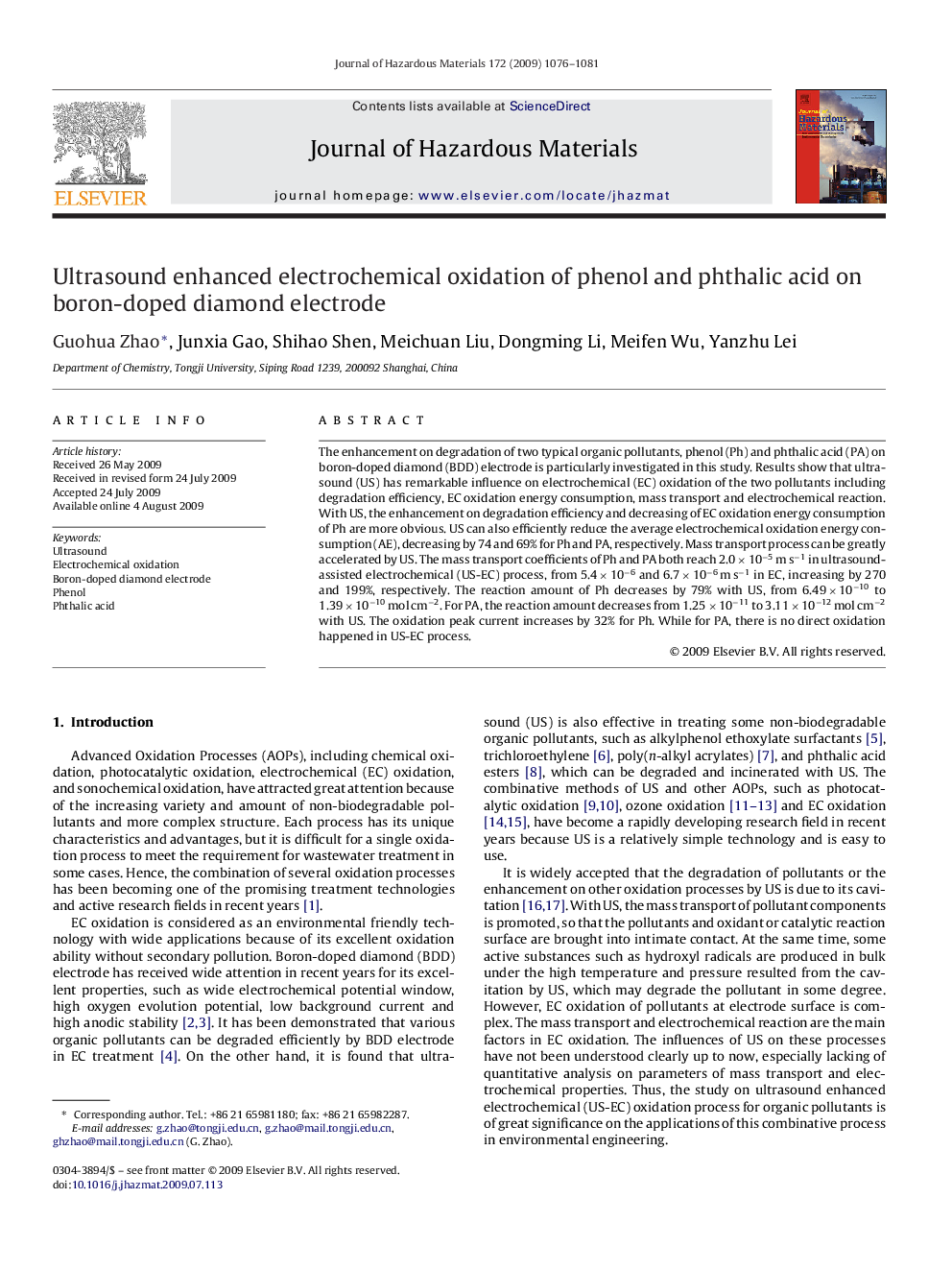| Article ID | Journal | Published Year | Pages | File Type |
|---|---|---|---|---|
| 580799 | Journal of Hazardous Materials | 2009 | 6 Pages |
Abstract
The enhancement on degradation of two typical organic pollutants, phenol (Ph) and phthalic acid (PA) on boron-doped diamond (BDD) electrode is particularly investigated in this study. Results show that ultrasound (US) has remarkable influence on electrochemical (EC) oxidation of the two pollutants including degradation efficiency, EC oxidation energy consumption, mass transport and electrochemical reaction. With US, the enhancement on degradation efficiency and decreasing of EC oxidation energy consumption of Ph are more obvious. US can also efficiently reduce the average electrochemical oxidation energy consumption (AE), decreasing by 74 and 69% for Ph and PA, respectively. Mass transport process can be greatly accelerated by US. The mass transport coefficients of Ph and PA both reach 2.0 Ã 10â5 m sâ1 in ultrasound-assisted electrochemical (US-EC) process, from 5.4 Ã 10â6 and 6.7 Ã 10â6 m sâ1 in EC, increasing by 270 and 199%, respectively. The reaction amount of Ph decreases by 79% with US, from 6.49 Ã 10â10 to 1.39 Ã 10â10 mol cmâ2. For PA, the reaction amount decreases from 1.25 Ã 10â11 to 3.11 Ã 10â12 mol cmâ2 with US. The oxidation peak current increases by 32% for Ph. While for PA, there is no direct oxidation happened in US-EC process.
Related Topics
Physical Sciences and Engineering
Chemical Engineering
Chemical Health and Safety
Authors
Guohua Zhao, Junxia Gao, Shihao Shen, Meichuan Liu, Dongming Li, Meifen Wu, Yanzhu Lei,
